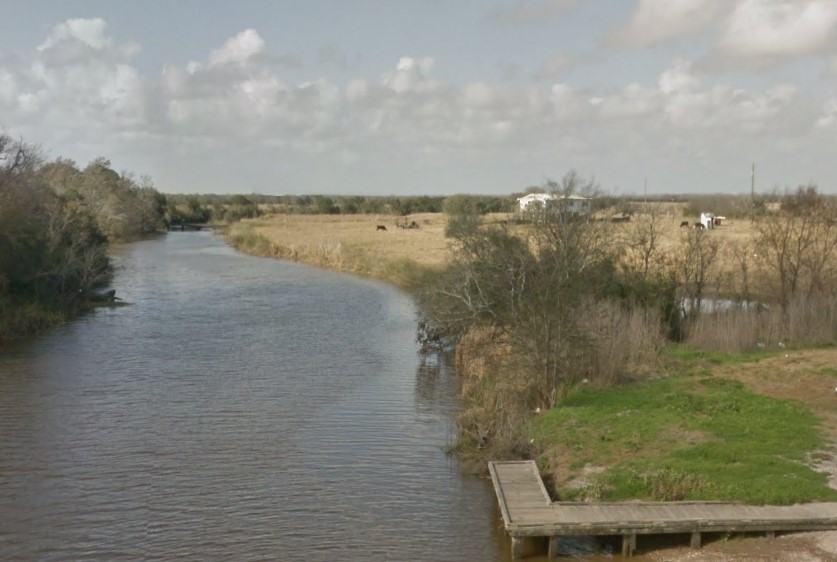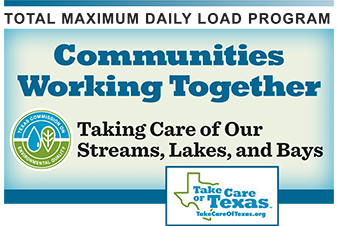Halls Bayou and Willow Bayou

Photo Courtesy of the
Houston-Galveston Area Council
Counties: Brazoria, Galveston
Parameter: Bacteria
Basins: Bays and Estuaries, San Jacinto-Brazos Coastal
Segments: 2432B, 2432C
Assessment Units (AUs): 2432B_01, 2432C_01
On this page:
- Background and Goals
- Watershed Description
- Get Involved
- Adopted TMDLs
- Reports
- Contact the TMDL Program
Background and Goals
Since 2012, high concentrations of certain fecal bacteria have been identified in Halls Bayou, and since 2014, in Willow Bayou. Fecal bacteria are found in both human and animal waste. The presence of these bacteria may indicate a health risk to people who swim or wade in the bayou—activities referred to as “contact recreation” in the Texas Surface Water Quality Standards.
To address these concerns, people who have a stake in the watershed are working with TCEQ to develop TMDLs and an I-Plan. A TMDL is like a budget—it determines the amount (or load) of bacteria the creek can receive and still support the contact recreation use. The allowable load is then allocated among categories of sources within the watershed. The I-Plan outlines the measures that will be used to reduce pollution.
The goal of this project is to improve water quality in order to protect recreational uses. Toward that goal, TCEQ and stakeholders are developing TMDLs for bacteria in the bayous. Stakeholders will also develop one I-Plan to reduce bacteria in Halls and Willow bayous, Chocolate Bayou, and Mustang Bayou, all of which are in the larger watershed of Chocolate Bay.
Watershed Description
Halls Bayou Tidal (Segment 2432C, AU 2432C_01) is a tributary of Chocolate Bay (Segment 2432), an embayment of West Galveston Bay. A tidal stream, Halls Bayou is 19.6 miles long and begins approximately six miles south-east of Alvin in Brazoria, with intermittent headwaters. The segment flows southeast past Halls Bayou Camp, briefly enters Galveston County, and then runs parallel to the Galveston County line into Halls Lake, through the Narrows, and into Chocolate Bay.
Willow Bayou (Segment 2432B) is a major freshwater tributary to Halls Bayou. The intermittent headwaters for Willow Bayou arise three miles southwest of Hitchcock in western Galveston County. The stream flows southwest to its mouth on Halls Bayou at the Brazoria County line.
In the upper reaches of the project area, topography ranges from flat coastal plain to rolling terrain, transitioning to flat terrain with shallow depressions in the lower reaches. Halls Bayou and its tributaries are typically sluggish due to the gentle sloping relief found on the coastal plain. Riparian vegetation is still common along portions of the bayou.
The TMDL watershed is primarily coastal tall grass prairies and marsh wetlands, with forested riparian areas consisting of water-tolerant hardwoods and conifers. This habitat supports a diverse population of both freshwater and saltwater fish. With extensive beds of seagrass, particularly wild celery, the bayous provide habitat for numerous waterfowl in the winter.
Land use in the area is primarily agricultural. Residential areas are concentrated primarily to the northeastern portion of the watershed in Galveston County, although a small area of the northern portion of the watershed in Brazoria County is also residential. There are no major cities or towns located in the watershed.
The Gulf Coast Water Authority maintains pump stations on Chocolate, Mustang, and Halls Bayous to supply up to 400,000 acre-feet of water per year for industrial, irrigation, and municipal purposes.
Get Involved
In all its projects, TCEQ gathers opinions and information from people who represent government, permitted facilities, agriculture, business, environmental, and community and private interests in the watershed. Staff from the Houston-Galveston Area Council (H-GAC) have been working with stakeholders to distribute information about this project and involve them in developing the I-Plan for watershed improvement.
Adopted TMDLs
The Commission adopted these TMDLs on July 23, 2025. EPA approved them on Oct. 20, 2025, at which point they became an update to the state’s Water Quality Management Plan.
- Two TMDLs for Indicator Bacteria in the Halls Bayou Tidal and Willow Bayou Watersheds
- Response to Public Comment
- Response to EPA Comment
Reports
H-GAC staff completed a technical report that compiled and analyzed all available bacteria data and considered sources of the bacteria and their relative contributions.
- Technical Support Document, January 2025
Contact the TMDL Program
Please email tmdl@tceq.texas.gov and mention the Halls Bayou bacteria project in the subject line. Or call us at 512-239-6682.




 Back to top
Back to top